Whether it is possible for nursing mum cheese?
Last reviewed: 23.04.2024

All iLive content is medically reviewed or fact checked to ensure as much factual accuracy as possible.
We have strict sourcing guidelines and only link to reputable media sites, academic research institutions and, whenever possible, medically peer reviewed studies. Note that the numbers in parentheses ([1], [2], etc.) are clickable links to these studies.
If you feel that any of our content is inaccurate, out-of-date, or otherwise questionable, please select it and press Ctrl + Enter.

Cheese when breastfed can be very useful, but in some cases it can harm. But the complete absence of cheese in the diet of a young mother is also harmful, since it limits her and the baby in the source of calcium. Therefore it is important to understand what kind of cheese you can eat when you are lactating, and which one will be very useful.
The Benefits of Cheese
Breastfeeding is a special time to eat well for both the mother and her baby. It is important for mothers to eat healthy food, because the food consumed by it is passed on to the child. In fact, breast milk provides the energy, fluids and nutrients your baby needs. In addition, during breastfeeding, moms should monitor what they eat to maintain their weight, and the very function of lactation.
Moms should not try the diet while she is breastfeeding, because Mom, in fact, needs more calories than it was during pregnancy. Eating well during breastfeeding is the best gift you can give your child, and helps moms maintain a good nutrition balance. You can eat a wide variety of foods, however, if your child becomes moody or is disturbed by colic, the diet of nursing moms can have real meaning. Stay away from spicy foods, such as certain spices, including cinnamon, garlic, pepper and chili. In addition, you should avoid certain types of vegetables that can make your child more moody, such as cabbage, cauliflower, broccoli, garlic and cucumber. Foods rich in iron are good for eating, such as beans, dried fruits, leafy greens, nuts, meat and chicken. But again, eat beans and nuts in small quantities.
Cheese in the diet of a young mother is of particular importance, since it is an important nutritional element due to the calcium content. Other products containing calcium are milk, calcium-enriched foods such as cereals, juices, soy and rice drinks and bread.
Cheese is produced and used throughout the world. It is milk food made from pressed milk curd. Different types are made from raw (fresh) cheeses or mature (aged) cheeses. In its most basic form, cheese is made by rolling up milk, the same process that produces yogurt, where the milk coagulates, and the substance inside it can be divided.
Solid parts (fats and proteins) are split from liquids (whey protein and water), and what then determines which cheese you will eventually get.
Cheese is a delicious and nutritious food, which is very versatile. You can add it to other dishes or eat yourself. There are more than 300 kinds of cheese, including cheddar, mozzarella, brie, and many of which are available in different tastes, forms (pieces, cubes, sticks, spreads).
Is it safe to eat cheese during breastfeeding?
While you are breastfeeding, it is important to have a healthy and balanced diet that will be nutritious for both you and your young child. It's safe to eat most types of cheese while you are breastfeeding.
Cheese is a storage of nutrients that will increase your health and the growth of your baby. These nutrients are vital for the overall development of your child. Adding protein to your diet will keep your tummy full and will not allow you to snack unhealthy food. The protein is necessary for the body to maintain many functions, from healthy metabolism to muscle regeneration. The protein contained in the cheese is easily digested and is especially useful in the metabolic process. Protein is also an excellent source of energy and is one of the most important requirements of the human body.
Cheese is an important source of carbohydrates. Carbohydrates are fuel for the body. The human body works on carbohydrates and requires them to generate energy. Cheese contains dairy carbohydrates, which are destroyed in the form of glucose and sugar. But the amount of carbohydrates you can get from eating depends on the type of cheese that you eat.
Cheese is the source of fat. Omega 3 and 6, together with the amino acids present in the cheese, can improve the work of the nerve and brain. The body requires cholesterol in the form of good fat to perform its daily routines to keep you fit and prevent illness.
Depending on our level of activity, our bones tend to quickly lose their health. In this case cheese can be an excellent addition to your diet. This is due to the fact that some varieties are not only rich in calcium, but also a complex of vitamin B. Vitamin B helps distribute calcium throughout the body. Calcium will also help strengthen your bones and teeth and prevent the onset of osteoporosis.
Eating cheese along with a well-balanced diet will help you absorb less carbohydrates and control blood sugar levels.
Cheese is also a rich source of zinc and biotin. Zinc promotes the growth and repair of your tissues. Therefore, the use of delicious cheese will help not only to pamper the taste buds, but also to increase the speed of recovery. Cheese also prevents macular degeneration of the retina, keeps the skin healthy and makes your nails strong. Biotin helps prevent hair loss, which is a common complaint among young mothers.
We all know the benefits of yogurt as a probiotic, but it is not the only product that contains good bacteria. Good bacteria present in the cheese help maintain intestinal health.
You can eat all solid types of cheeses, as they ripen and contain salt, which reduces the danger to the child. Unpasteurized soft cheeses (and other unpasteurized dairy products) can carry bacteria called listeria. Cheese should be made from pasteurized milk (pasteurization kills the body of listeria), but imported cheeses can be a problem. Listeriosis is usually a minor flu-like illness in healthy adults, but can cause serious problems in women and young children.
Therefore, the mother can eat soft cheeses such as Feta, queso blanco, queso fresco, Brie, Camembert cheeses, blue cheese fats and Panela, if they are labeled, as made with pasteurized milk.
How much cheese can a nursing mother? This question is very individual. It should be taken into account that most cheeses - including Bree, Stilton, Cheddar, Double Gloucester - contain between 20 and 40 grams of fat per 100 g. Food containing more than 17 grams of fat per 100 g is considered high in fat. Some cheeses can also have a high salt content - more than 1.5 grams of salt per 100 g is considered high. Using too much salt can contribute to various violations. Therefore, the amount of cheese per day is better limited to 60 grams.

What cheeses are useful?
The benefit of cheese depends on its type, amount and manner of use. Different cheeses have a different composition of vitamins and elements, which should be taken into account when feeding the baby and choosing her diet.
Processed cheese
It is used most often, since it is the most accessible and most pleasant taste of cheese. Have you ever wondered why this is so? The first hint of anxiety is when you turn over a packet of melted cheese and see a list of ingredients a mile long. This is not a fresh farm cheese with three or four ingredients. This material contains dairy by-products, emulsifiers, saturated vegetable oils, excess sodium, food colorings, preservatives and sugar.
Many manufacturers claim that their product is made from real cheese, but the raw base is significantly transformed by the time the processed product is completed. Processed cheese is, in fact, a carefully thought out and massive product that is designed for good taste and good functioning in the mass market of food at a very low price.
Some processed cheeses are so artificial that they can not be conditionally designated as "cheese", so it is called "cheese".
Melted cheese actually contains many elements besides the cheese itself. Emulsifiers: they are added to keep the melted cheese on an even texture throughout the product, as well as during its melting. Conversely, natural cheese tends to excrete into pieces of protein and liquid fat when it is heated.
Sometimes, starches are also used to improve the texture. Processed cheese will melt, spread and stretch evenly without changing the texture or solidification.
Vegetable oils: various types of vegetable oils, such as soybean, sunflower, rapeseed and corn oil, are used in melted cheese products to improve taste and texture. They also serve as cheap fillers for increasing the product in order to use less real cheeses.
Sodium and sugar: processed cheese usually contains at least twice as much sodium as in the production of natural cheese. This is due to the fact that food producers have become wise to specific combinations that most effectively stimulate our taste buds and brains. Along with the taste of emulsifiers and fats from vegetable oils, processed cheese is a carefully thought-out product that you love just because of this.
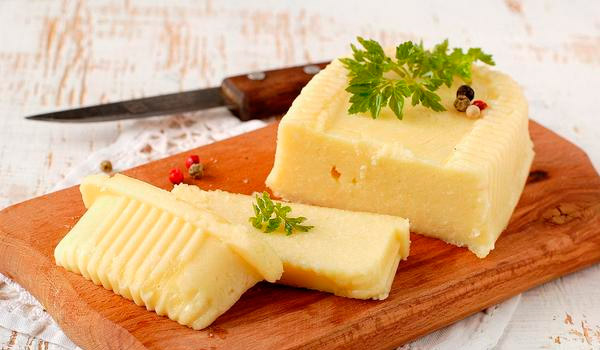
Preservatives. One of the main attractive points for cheeses, like food, is a long shelf life. This is achieved through a number of additives that preserve the product for longer storage and, therefore, reduce the likelihood of loss of income. Some common preservatives include sorbic acid and sodium citrate. Some processed cheeses are so heavy on these additives that they do not even need to be cooled. Try to leave a piece of melted cheese on the windowsill, and after a few weeks it will turn brown and begin to dry out, but it will not spoil like kefir. This is because microorganisms know that there is nothing useful in this product.
Considering all these factors, the fused cheese is not recommended to eat at feeding, as its advantage is minimal. Can the processed cheese be useful if it is made from quality cheese without additives.
Sausage cheese
Refers to a variety of processed cheese, so the recommendations for its use are the same.
Hard cheese has a very large arsenal of products, which is represented by many types of cheese. All these types of cheese are very useful for a nursing mother, and each of its kind contains many useful elements. Any hard cheese is a rich source of magnesium and a store of microelements of zinc and selenium. Due to the specific composition of the mineral compounds in the cheese, a piece of hard cheese at the end of the meal helps to some extent to prevent tooth damage or the risk of dental caries.
Cheese contains several micronutrients - relatively many fat-soluble vitamins (A and D) and several water-soluble B vitamins. Bacteria that are active in cheese processing produce representatives of the latter group.
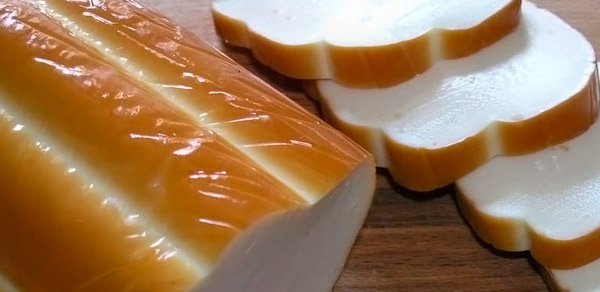
A 100 gram piece of cheese contains at least one third of the recommended daily intake of vitamin B12.
Chees contain a large number of calcium and phosphorus compounds, which are easily absorbed by the human body, and are also transferred to breast milk. These two elements are preserved in cheeses mainly because they are associated with milk proteins. It is also good to know that both the ratio of calcium to phosphorus and the content of milk fat in the cheese support their absorption.
All other useful properties of hard cheese are also presented in different types.
Adyghe cheese
Produced by Circassian people living in Turkey, Jordan, Syria, Israel, as well as the republics of Adygea. Currently, this cheese can be found in the local markets of many cities. Adyghe cheese contains all the fractions of milk protein, and since it is produced by whole milk, it is quite rich in its fat content. This is also an important feature that the dried cheese can be stored for a long time.
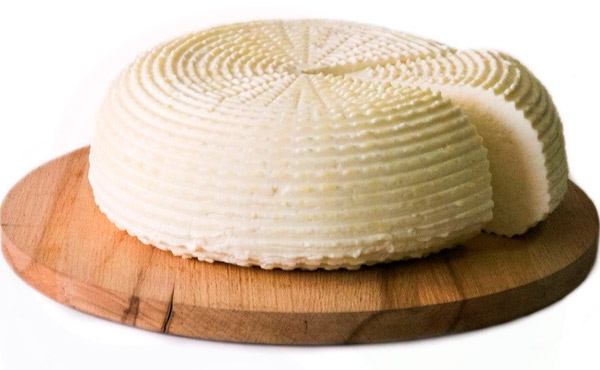
Traditional Adyghe cheese is mainly made from cow and sheep milk in family farms. This traditional sort of cheese has a high nutritional value, unique taste and aroma. Adyghe cheese contains proteins, calcium, phosphorus, riboflavin, vitamin B12, magnesium. Therefore, the inclusion of this cheese in the diet can be very useful for the enrichment of your breast milk with useful elements.
Blue cheese
It has a blue-green color, so it is also called blue cheese. The blue tint, present in the cheese, is due to the presence of bacteria that begin to age, thereby giving the cheese its characteristic blue hue. These cheeses get their characteristic spotted bluish appearance from the mold bands formed from penicillin cultures, which are poured into cheese or cottage cheese. Cheeses can be filled with Penicillium glaucum or Penicillium roqueforti, as well as lactobacilli. This production process means that ripened molded cheeses are rich in a variety of fungal, bacterial organisms that are not found in other cheese. No matter what variety you choose, blue cheeses are rich in protein, fat, vitamins and minerals. Only one ounce of blue cheese will give you 6.07 g of protein, 8.15 g of fat, but only 0.66 g of carbohydrates, which makes it good for a young nursing mother who wants to get in shape after giving birth.
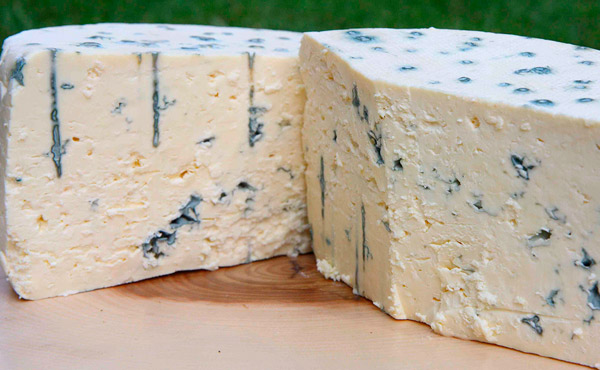
There are different kinds of cheese, such as Roquefort, Danabloo, Gorgonzola and Blue Stilton. It is low in calories and is filled with various nutrients that are necessary for our body.
The raw cheese contains a high level of fat - about 28 grams per ounce - but it can also be included in a healthy diet as a source of many nutritional benefits. Blue cheese contains a number of important vitamins and minerals, including vitamin A, vitamin D, retinol, sodium and zinc. Although not necessarily an important source of many of these, blue cheese also contains beneficial amounts of other minerals and vitamins. One serving of blue cheese contains 7 mg of magnesium, which strengthens the bones and performs other important functions. Blue cheese also contains a beneficial amount of vitamin B-12, which helps in the proper function of the nervous system.
Potassium is an essential element in the proper function of the body. As a vital component of muscle contraction, potassium helps cardiac function and digestion. One serving of cheese with mold contains 73 mg of potassium, which, in combination with other sources, can help achieve the recommended daily intake for nursing mothers at their increased need.
Adding cheese with mold to the diet of a nursing mother can help reduce the risk of cardiovascular disease. Studies have shown that people who consume blue cheese regularly have a lower risk of contracting cardiovascular diseases than their colleagues who do not consume it. Blue cheese also helps lower cholesterol and prevents inflammation of the artery and blood clotting in the veins or arteries.
Adding blue cheese to the diet reduces the risk of developing arthritis, and also helps in fighting it.
Blue cheese
Very good source of calcium. One serving of blue cheese contains about 150 milligrams of calcium. Thus, the consumption of blue cheese makes your bones healthy and helps in preventing diseases such as osteoporosis.
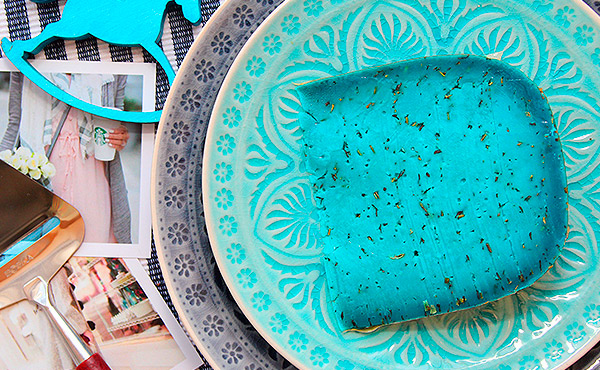
Nutrients present in blue cheese help in increasing memory. The consumption of blue cheese improves the functioning of brain cells.
Blue cheese
Very good source of phosphorus. This cheese contains milk protein, so those who can not drink milk directly because of lactose intolerance can eat blue cheese to get the necessary protein when lactating.
Studies have shown that the consumption of cheese with mold increases the immune system. Blue cheese has anti-inflammatory properties. Thus, it helps to fight various inflammatory problems in our body.
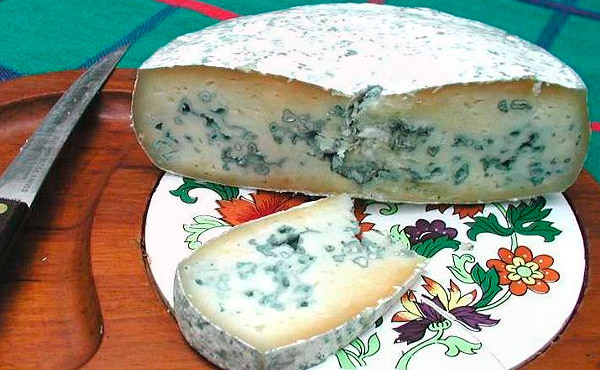
In other words, it plays an important role in preventing diseases, giving us a strong immune system.
Given such a variety of useful elements and properties, cheese with mold is uniquely recommended as a good dietary product. But it's important not to start experimenting with such cheese when you feed, and did not eat this kind of cheese before. After all, your child may not take this product well, taking into account also its specific odor. Therefore it is useful to eat such cheese if your baby tolerates it well.

Smoked cheese
It has a deep aroma of smoked food, which makes it a delicacy because of its pleasant taste qualities. Although in certain cases you can eat such cheese, but long-term use may not be very useful for health, especially when feeding a baby.
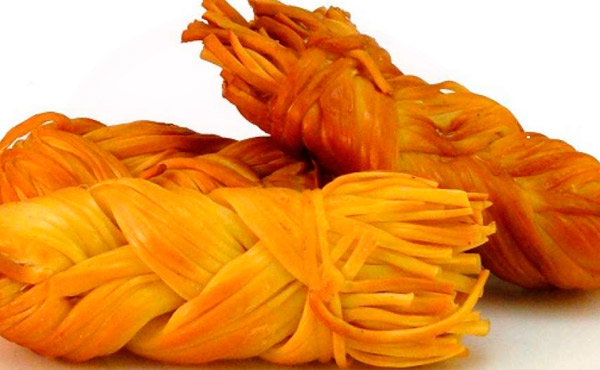
What is smoked products? Products exposed to smoke from the source, usually wood. Smoking products are usually done to prepare or preserve them for a longer time. Smoked products are often not fully prepared. The smoking process also produces harmful carcinogens, such as nitrites and nitrates in cheese. This can be harmful to your baby. This cheese has a pronounced smell, and, as you know, all the strong smells penetrate into breast milk. Therefore, the baby can refuse to eat the breast if he does not like this taste of milk or the smell.
Cheese pigtail is referred to smoked cheeses, so its use should be limited.
Sulguni cheese
This is a soft marinated cheese produced in Georgia, more specifically in the Samegrelo region. It is made from cow, buffalo, goat or sheep's milk. It can also be obtained from a mixture of these substances. This semi-hard cheese has a milky flavor, which is slightly acidic with a touch of salinity. It is considered the best salted cheese. It also has a deeper texture.

All the useful properties of milk are contained in this cheese, since it is cooked with minimal heat treatment. This cheese contains vitamins B1, B2, PP, E, C, D, sulfur. In Georgia, such cheese was always given to sick children, because they believed that it contributes to a quick recovery. Therefore, during lactation, mom can eat such cheese, but you need to take into account the balance of salt and its freshness.
Cottage cheese
For decades, it has been a traditional food, thanks to its versatility, high protein and nutrient content, which gives it many health benefits.
For 100 g of curd cheese, energy is 86 calories, protein 1.6 g, fat 0.1 g, carbohydrates 4.4 g.
The macronutrient composition of the curd cheese is one of the main attractions for the health of young nursing mothers and their babies.
Like many other "cultivated" dairy products, curd cheese is relatively high in dietary protein associated with improved fat loss. 100 g of cottage cheese (a relatively small portion) contains approximately 11-12 g of protein, which is approximately 20% of the daily needs of the nursing mother.
The type of protein that is contained in the curd is predominantly casein. It is a slowly digestible protein found in many dairy products and is revered for its slow digestion, as many believe that this makes it an excellent source of protein for consumption before sleep. The idea is that casein will stimulate muscle recovery during sleep, and will resume energy. If the mother feeds the child at night, the cottage cheese can create an excellent balance of useful proteins, which will provide the necessary energy for the mother at the same time.
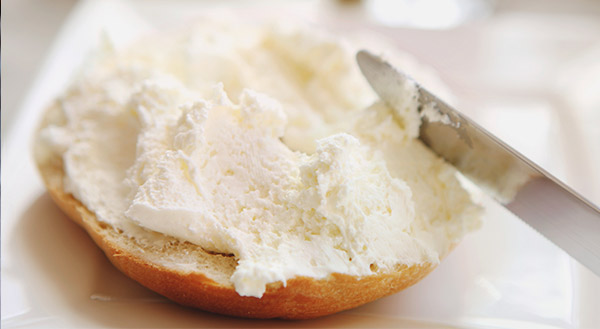
The fat profile of cottage cheese is also very attractive - while the total fat content is relatively small (with low fat and no fat options), the fats it contains are a good mixture of high-quality saturated and unsaturated fats.
Micronutrients are what usually determines which foods are "healthy" and which are not. When we imagine a healthy diet, it is usually filled with colorful vegetables, high-quality animal proteins and various plant products.
Like many animals or dairy products, cottage cheese is rich in various vitamins B. They are usually associated with the proper production and functioning of enzymes, which makes them an integral part of maintaining muscle building, fat loss, immune function, blood health status and many other important processes . A nursing mother can purchase about 7% of the daily B12 requirements from 100 grams of cottage cheese (a relatively small amount, depending on how you eat it) - a vitamin that is almost completely absent from plant foods. There are comparable amounts of vitamin B2, vitamin B5 and vitamin B9, which makes it a relatively useful source of low-calorie, nutritionally-dense dairy products. This makes it an excellent choice for mom-vegetarians who can not get the full range of B-vitamins from plant sources.
Vitamin A is also contained in reasonable amounts in curd cheese, with about 5-7% of our daily needs contained in a modest serving of 100 g. Vitamin A is associated with proper immune function and the health of the skin and other tissues.
Vitamin D is one of the most common deficiencies observed in children for the first three years of life. Vitamin D comes from a number of sources, one of the most important is the synthesis in the skin when we are in the sunlight. Nevertheless, all babies need additional supplement of this vitamin in the diet, and the consumption of curd cheese by the mother can give an excellent supply of it. Curd and many dairy products are excellent sources of dietary vitamin D. The primary role of vitamin D in health and productivity is to maintain bone density and absorb calcium into the bone.
Cottage cheese is an excellent source of calcium and with vitamin D, can give us the synergistic advantage of two trace elements. Another, often forgotten mineral is potassium. In combination with calcium, this mineral is associated with mineral bone density. Calcium and potassium are the two main minerals that make up the tough "outer" part of the bones - which gives our body a sufficient supply of both of these nutrients, this is a good way to ensure that the child during his intensive development will have all the necessary minerals.
Curd cheese is replete with selenium - a microelement that has a deep antioxidant. Antioxidants protect cells from free radicals, which otherwise could harm DNA.
A number of such advantages, as well as the availability of curd cheese in the price, should direct mom to the fact that when breastfeeding her diet several times a week must be present curd cheese.
Cream cheese
Produced usually from milk buffaloes, cows, sheep or goats in various textures, fragrances and forms. It is important to acidify the milk and include the fermented rennet enzyme to cause coagulation. They separate the solid particles and press them into their final form. Thus, cheese has a combination of fat and protein from milk. Although the cream cheese is a soft tasting fresh cheese, it comes with a very high fat content.
The usual cream cheese is high in saturated fat, which is not so healthy, especially for your cardiovascular health. It also contributes to arthritis, type 2 diabetes and memory loss. If you choose low-fat cream cheese, a tablespoon of this cheese will have fewer calories. It is much healthier and is a good choice, even if you like cream cheese.
Cream cheese has a large concentration of vitamins and minerals. It contains vitamin B12, vitamin A and vitamin K2. It contains calcium and zinc. Selenium is a dietary mineral that plays an essential role in the functioning of our body.
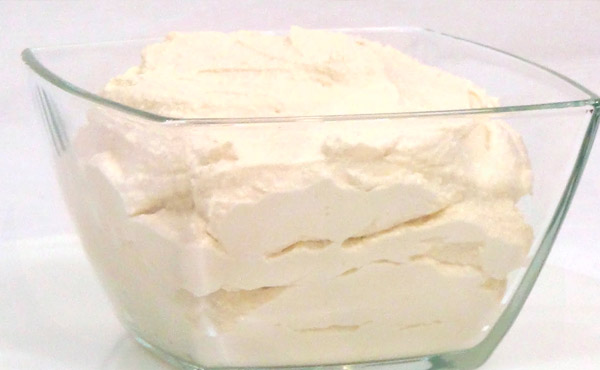
Cream cheese has in its composition conjugated linoleic acid. These acids in the cheese turn fat into energy, and also are an antioxidant and act as an anti-inflammatory agent.
Since cheese is a dairy product, it has the same nutrients that you can find in yogurt or milk. Casein is a high-quality protein. Most proteins contain caseins, which are rich in essential amino acids.
Therefore, cream cheese when choosing the minimum amount of fat can be a very useful source of nutrition for nursing mothers.
 [1]
[1]
Goat cheese
Made from goat milk and available in soft and hard forms, such as other cheese. For you it's healthier and better than cheese made from cow's milk. In addition to having more nutrients than other types of cheese, there are several other interesting benefits to the health of goat cheese.
Goat cheese is a low-fat alternative to cheese. It contains less fat than other forms of cheese, and replacing regular cheese with goat cheese can help you reduce the amount of saturated fat and cholesterol in your diet. Goat cheese contains slightly more than half the amount of fat than regular cheese. And, reaching the saturated fat, goat cheese contains only half of the same as in normal cheese.
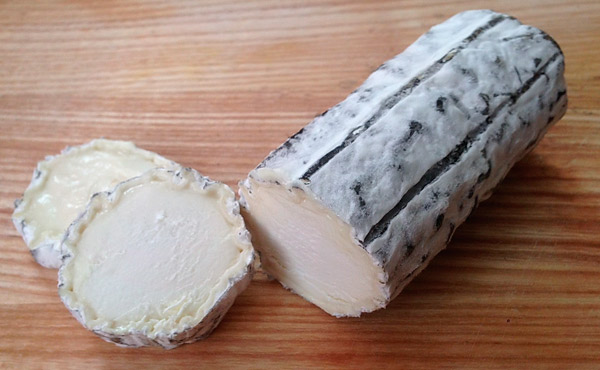
Goat's cheese contains fewer calories than any other form of cheese made from cow's milk. Ideally, if you replace cheddar with goat cheese, you will effectively reduce 200-300 calories from your diet.
But if we talk about nursing mothers, goat's milk contains significantly less lactose than regular milk. Lactose is usually lost when the cheese is shaken, and goat cheese, thus, contains an exceptionally low amount of lactose. This makes it an ideal cheese, since kids do not have colic to consume such a product.
Goat cheese contains less than half the amount of sodium than regular cheese. Excess sodium can lead to chronic conditions and potentially fatal diseases, such as a heart attack and even a stroke.
Goat cheese is not as rich as regular cheese in terms of protein content, but it provides a decent amount of nutrients that is sufficient for the proper functioning of the body.
Goat's cheese contains more minerals and vitamins than cow's cheese. It is especially rich in vitamin D and vitamin K, and also contains the same amount of vitamin A as cow's cheese. Goat cheese also contains B vitamins, such as thiamine, niacin and riboflavin. Riboflavin is an important vitamin that promotes tissue health. Since your body does not produce these essential vitamins and minerals on its own, goat cheese can provide a constant source of these essential vitamins for the baby as well.
Goat cheese is especially rich in calcium with a higher concentration of calcium compared to cow's cheese. Calcium is especially important for the body, it helps to strengthen bones and teeth, and also protects you from diseases.
So, now that you know about the amazing health benefits of goat cheese, think about replacing the usual cheese with goat cheese, especially with lactation.
Home-made cheese, that is, cottage cheese made from cow's milk, has its own useful properties, but it does not replace some types of hard cheese. Therefore, you need to eat and hard cheeses, and soft sour-milk.
Cheese Bree
Very useful for moms when lactating. First of all, it provides your body with a source of energy that your cells can use for daily activities. Each bree portion contains 95 calories, which is almost 5% of daily caloric intake. Since brie is energetically dense food, this is the result of the carbohydrates contained in it. Each ounce of cheese contains 0.13 g of total carbohydrates, all in the form of sugar. As a result, brie makes a delicious addition to low-carb diets. Bree is also low-lactose, so people with mild lactose intolerance may not notice serious side effects when eating this cheese.
Most of the calories in brie are a source of protein and fat. Each serving of cheese contains almost 6 grams of protein and almost 8 grams of fat, including 5 grams of saturated fat. The protein in brie is a complete protein and provides all the amino acids that the body must receive.
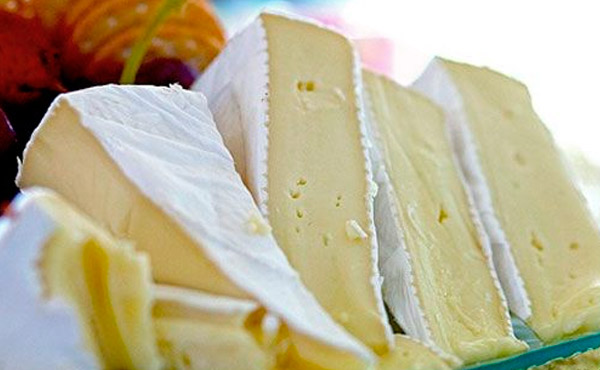
Consumption of brie also increases the intake of several vitamins. Cheese contains several vitamins B, including vitamin B-12, folic acid, niacin and riboflavin. Together, these vitamins help the body destroy proteins, carbohydrates and fats, so that your body can receive useful energy from your food. It also contains vitamin A, which is important for immune functioning, as well as for healthy skin and hair. Bree contains vitamin D, a nutrient important for the health of baby bones.
Bree also contains a number of important minerals that help maintain your health. Each serving of cheese contains calcium, magnesium and phosphorus - all the minerals that make up your bone tissue. It also provides a source of zinc, a nutrient that supports the enzyme that functions in your cells, as well as selenium, an antioxidant.
Cheese Tofu
It is an important source of protein, especially for vegans and vegetarians, which are often found among young nursing mothers today. Tofu is produced by coagulation of soy milk to create cottage cheese. Then the cottage cheese is pressed and compacted into gelatinous white blocks, recognized as Tofu.
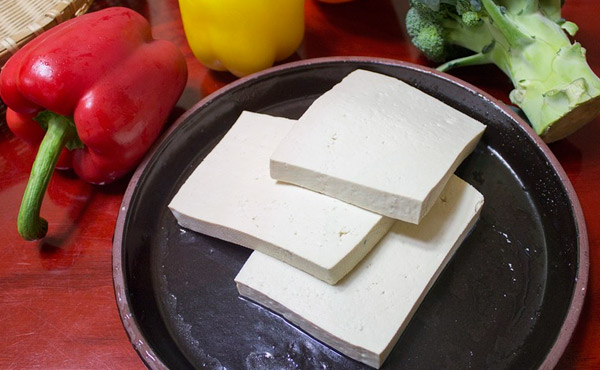
It also contains isoflavones, such as phytoestrogens. Isoflavones can possess both estrogen agonists and estrogen-antagonistic properties. They can help protect against certain types of cancer, heart disease and osteoporosis. However, excessive consumption may also pose some risks.
Therefore, such cheese can be a useful source of protein for a limited number of nursing mothers, but it is not worth changing the dairy products with this kind of cheese.
 [2]
[2]
Russian Cheese
He is one of the representatives of classic hard cheeses. This cheese has many useful properties of all kinds of cheeses, but you need to consider the content of salt and fat in it. Therefore, for nursing mothers who do not like exotic types of cheese, such cheese can be an alternative and must be in the diet.
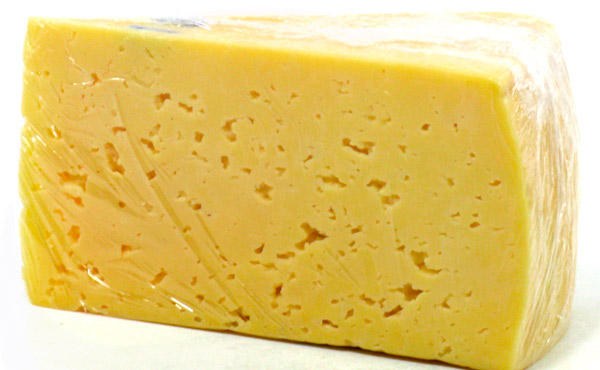
Cheese when breastfeeding is not only a useful product, but also necessary in the diet. Necessarily in the diet of the mother should be hard cheese and soft cheese, at least several times a week, which will ensure the full content of all nutrients and vitamins.

